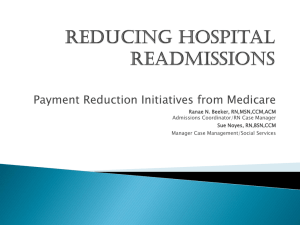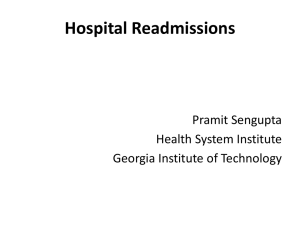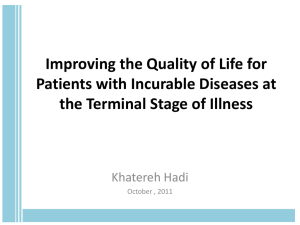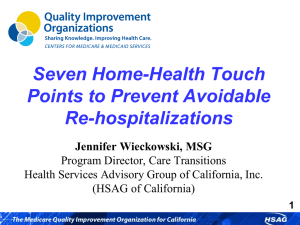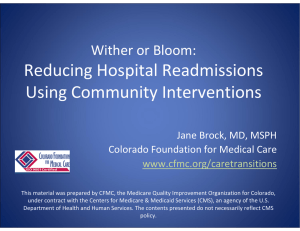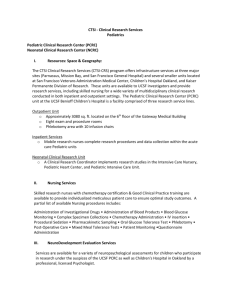Document 12097317
advertisement
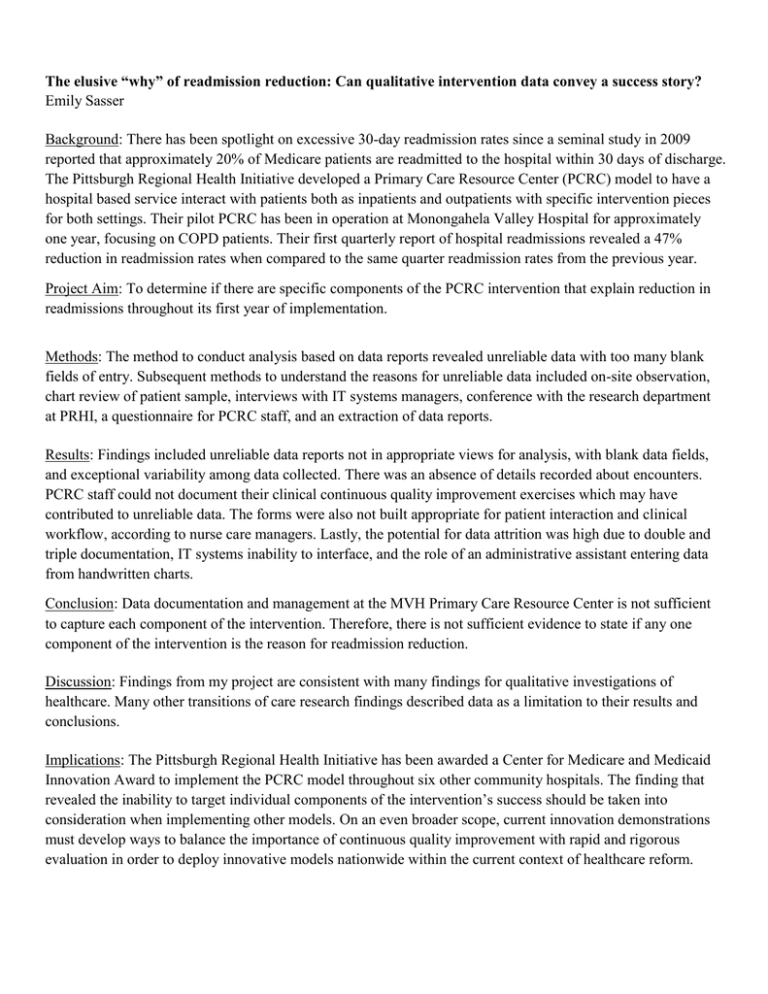
The elusive “why” of readmission reduction: Can qualitative intervention data convey a success story? Emily Sasser Background: There has been spotlight on excessive 30-day readmission rates since a seminal study in 2009 reported that approximately 20% of Medicare patients are readmitted to the hospital within 30 days of discharge. The Pittsburgh Regional Health Initiative developed a Primary Care Resource Center (PCRC) model to have a hospital based service interact with patients both as inpatients and outpatients with specific intervention pieces for both settings. Their pilot PCRC has been in operation at Monongahela Valley Hospital for approximately one year, focusing on COPD patients. Their first quarterly report of hospital readmissions revealed a 47% reduction in readmission rates when compared to the same quarter readmission rates from the previous year. Project Aim: To determine if there are specific components of the PCRC intervention that explain reduction in readmissions throughout its first year of implementation. Methods: The method to conduct analysis based on data reports revealed unreliable data with too many blank fields of entry. Subsequent methods to understand the reasons for unreliable data included on-site observation, chart review of patient sample, interviews with IT systems managers, conference with the research department at PRHI, a questionnaire for PCRC staff, and an extraction of data reports. Results: Findings included unreliable data reports not in appropriate views for analysis, with blank data fields, and exceptional variability among data collected. There was an absence of details recorded about encounters. PCRC staff could not document their clinical continuous quality improvement exercises which may have contributed to unreliable data. The forms were also not built appropriate for patient interaction and clinical workflow, according to nurse care managers. Lastly, the potential for data attrition was high due to double and triple documentation, IT systems inability to interface, and the role of an administrative assistant entering data from handwritten charts. Conclusion: Data documentation and management at the MVH Primary Care Resource Center is not sufficient to capture each component of the intervention. Therefore, there is not sufficient evidence to state if any one component of the intervention is the reason for readmission reduction. Discussion: Findings from my project are consistent with many findings for qualitative investigations of healthcare. Many other transitions of care research findings described data as a limitation to their results and conclusions. Implications: The Pittsburgh Regional Health Initiative has been awarded a Center for Medicare and Medicaid Innovation Award to implement the PCRC model throughout six other community hospitals. The finding that revealed the inability to target individual components of the intervention’s success should be taken into consideration when implementing other models. On an even broader scope, current innovation demonstrations must develop ways to balance the importance of continuous quality improvement with rapid and rigorous evaluation in order to deploy innovative models nationwide within the current context of healthcare reform.
